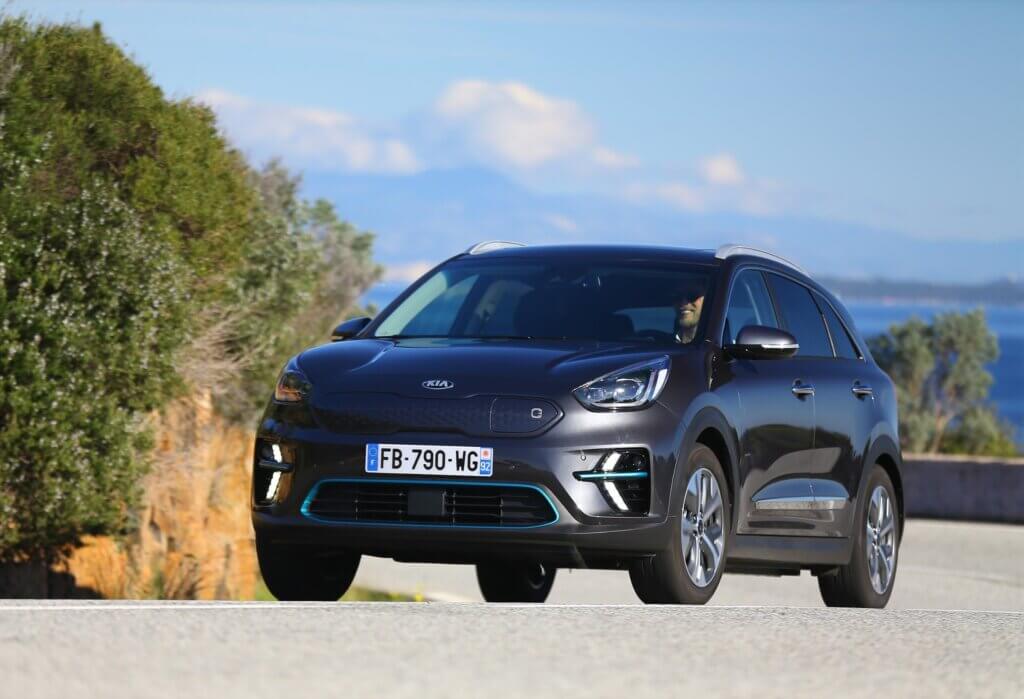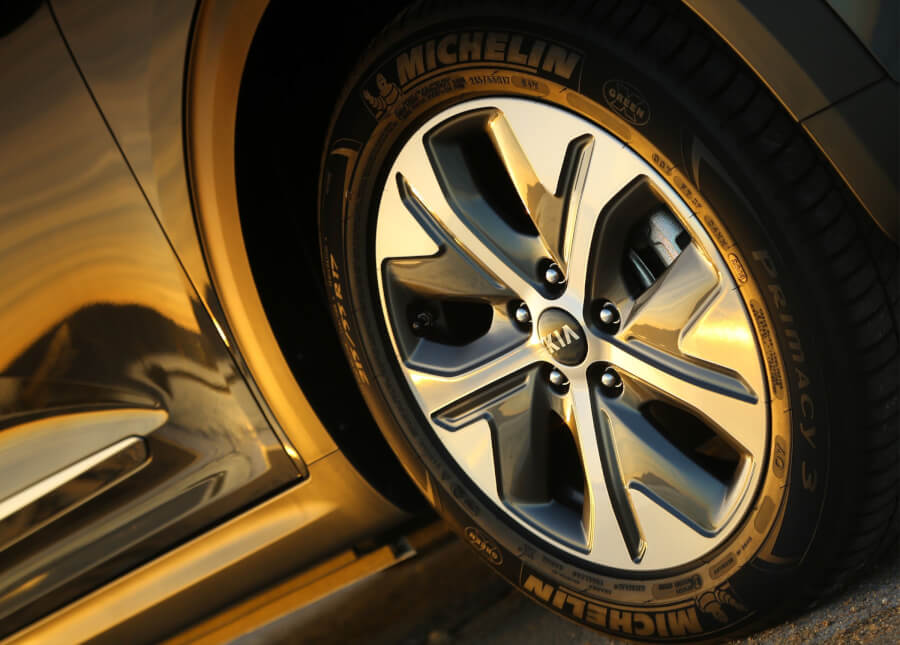Whatever the capacity of the electric car’s battery, you always want to cover as much distance as possible with the available energy and reduce the frequency of stops and downtime required for charging. On a daily basis, this can be achieved with a power recovery function that works in all electric cars.
The engineers who developed the first series hybrid models took advantage of the fact that the electric motor could also act as a generator. In this way, a significant part of the kinetic energy released during braking can be used to charge the battery. In conventional internal combustion cars, braking energy has no other useful use, while in electric cars it helps to increase the mileage margin.
In addition, the new generation of braking systems has become smarter. For example, Kia electric cars have four switchable intensity levels for recuperation.
The so-called “single-pedal mode” available in the new Kia e-Niro, for example, is extremely convenient in city driving: as soon as the driver releases the accelerator pedal, the car brakes automatically, ensuring maximum energy recovery in any driving situation without additional driver intervention .
Mode intensity – according to needs
According to Tom Tymoshko, editor of Auto Bild Latvija, electric drive has made driving easier than ever, gradually turning the clutch, shifting gears and adjusting speeds into exotic memories from the “good old days”.
However, before cars become autonomous, drivers still need to know this, and electric driving has its nuances. Understanding them can improve the interaction with the car, as well as maximize the potential of the technologies invested in vehicles.
Regarding recuperation, Tymoshko’s recommendation for those who have recently switched to an electric car is to start with the gentlest or lightest energy recovery mode, as it resembles the internal combustion car rolling in neutral or, if driving with an automatic transmission, rolling with the accelerator pedal released. Gradually getting used to the system, the recovery intensity can be adjusted to typical driving situations and your own style.
There can be no question of ‘right’ and ‘wrong’, but I think all motorists can be divided into two groups: those who take driving with interest and enthusiasm and those who move from point A to point B. This and subjectively acceptable dynamics usually also determine how actively the rider uses the ability to change modes.
Auto Bild Latvija editor Toms Timoško
Oskars Irbītis, a lecturer at the Department of Automotive Engineering at the Faculty of Mechanical Engineering, Transport and Aeronautics of Riga Technical University (RTU), points out that the amount of energy recovered during regenerative braking depends on the proportion of braking between the electric motor and the car’s service brakes.
When braking in emergency mode, the least amount of energy is recovered, as virtually all deceleration is provided by the service brakes. When the brake pedal is partially depressed, the car is braked by an electric motor. In quite a number of situations, up to 80 percent of the kinetic energy can be used, and the service brake is basically used only to stop the car completely.
Oskars Irbītis, Lecturer, Department of Automotive Engineering, Faculty of Mechanical Engineering, Transport and Aeronautics, Riga Technical University (RTU)
Works especially well with cruise control
O. Irbītis emphasizes that although the energy carrier is different, the laws of physics do not change, and most of the driving principles remain the same. His recommendation for those who want the maximum recovery effect is to brake with the brake pedal partially depressed and generally avoid a sharp reduction in speed. The RTU lecturer explains that charging the battery depends on the amount of kinetic energy, ie how intense the deceleration is and how long it lasts. Another aspect that affects the recovery effect is the battery settings.
In turn, the editor of Auto Bild Latvija urges to pay attention to another modern technology that helps increase the efficiency of recuperation – adaptive cruise control. In the electric models of Kia and other manufacturers, it can be useful both in the city and on the road, as it automatically brakes the car according to the speed of the vehicle in front and recovers automatically accordingly.

O. Irbītis believes that regenerative braking can be effective by applying both driving assistance systems and good driving skills. According to him, both options are suitable and the choice depends on the driving situation.
By using the terrain and knowing the road, an experienced driver can achieve the lowest possible energy consumption, but this requires attention and can affect concentration over a long journey. This is especially true in monotonous stages, where non-fatigue-free technologies ultimately prove superior.
When driving on horizontal roads on sections where the landscape does not change, cruise control maintains the set speed precisely, thus avoiding unwanted accelerations, which of course affect energy consumption.
Oskars Irbītis, Lecturer, Department of Automotive Engineering, Faculty of Mechanical Engineering, Transport and Aeronautics, Riga Technical University (RTU)
Brakes are used less, but are still needed
While effective recovery is important, Tymoshko urges a regime that simply seems comfortable without falling to extremes, which could ultimately affect security. If the braking intensity seems disturbing when you release the accelerator pedal, it is better to switch to lighter mode. Conversely, more braking can be chosen if it suits the traffic situation or the road section. After all, those who are accustomed to using recuperation rarely need service brakes.
When driving an electric car, the service brakes are used relatively infrequently and little. Some manufacturers even install rim brakes on the rear wheels, not least because the drums are better designed, but because they are easier to maintain with little use. Brake discs simply rust when not in use.
Oskars Irbītis, Lecturer, Department of Automotive Engineering, Faculty of Mechanical Engineering, Transport and Aeronautics, Riga Technical University (RTU)
According to O. Irbītis, electric cars still need the usual brakes – with discs and pads, so that the car can be stopped and slow down quickly in emergency situations. At the same time, he states that the wear of the components of the electric car brake system is less.
T. Tymoshko adds that if the recuperation has several intensity levels, it is possible to control the deceleration by switching the sequential modes so that the brake pedal does not have to be depressed at all. This is especially convenient in cars with steering wheel controls, such as the aforementioned Kia e-Niro.
Given the small proportion of electric cars, the nuances of recuperation still affect a small number of drivers, but it is clear that this will change, and I assume that at some point in the future, ‘new braking’ could even become one of the topics of driving instruction.
Auto Bild Latvija editor Toms Timoško
Charged opinion
Driving with one pedal is very comfortable. Driving with Nissan Leaf, I only need to think of one pedal – the accelerator. Sure, it takes time to get used to, but once you’ve mastered it, how can it be otherwise? As for the drums, we can agree on 2012 Citroen C-Zero still running with the original brakes.


